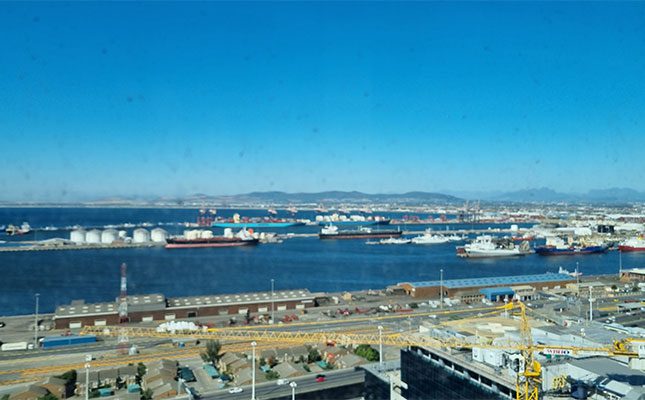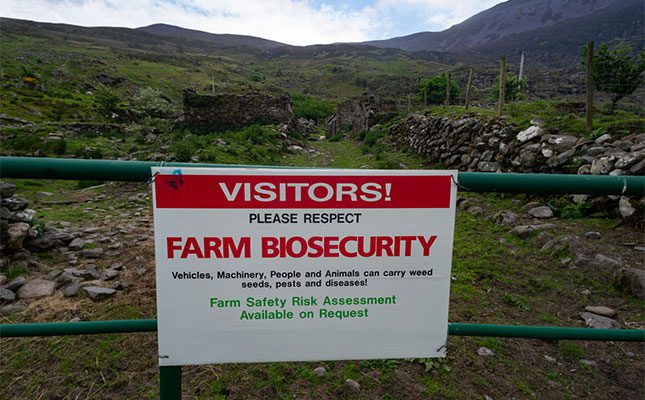
Photo: Jeanne van der Merwe
The Cape Doctor, Cape Town’s strong south-easterly wind, was not kind to the city’s shipping industry in the first two weeks of November.
According to the two most recent editions of the Cargo Movement Update, a joint effort by the South African Association of Freight Forwarders and Business Unity South Africa, adverse weather cost the Port of Cape Town over 40 operational hours in the week ending 8 November and more than 20 hours the following week.
Oscar Borchards, managing executive for Transnet Port Terminals in the Western Cape, said in a statement that the port is expecting to ship 3% more export fruit this season than last year. He added that the new fleet of imported rubber-tyred gantries (RTGs) can operate in winds of up to 90km/h, compared with the existing fleet’s limit of 72km/h. This means some work can continue even when the port is windbound.
Borchards explained that waterside operations are suspended when winds exceed 72km/h, but other measures help maintain some continuity:
- Instead of all operations coming to a halt, imported and empty containers are moved by rail to the Belcon facility in Bellville, where importers can collect them, reducing congestion at the port.
- Transnet will soon accept refrigerated containers (reefers) at Belcon, which will then be shipped to the port by rail.
- Six RTGs will be deployed at the port to service trucks, allowing export fruit to be offloaded without waiting for the windbound period to end.
Currently, 12 of the new RTGs are in service at the port. Another six will enter service at the end of November, and 10 more are due to be handed over to the port in February 2026.
Borchards said staffing would also be increased for the duration of the peak export season, and there would be improved management of the booking timetable for trucks to enter the port and offload when the port reopens after wind-related shutdowns.
Furthermore, he said Transnet had “engaged various facilities to assist with the plug-in of containers” and was working with the industry “to facilitate the flow of containers to the [Cape Town Container] Terminal”. The port was also diverting vessels to its Cape Town Multipurpose Terminal, “which is 50% less prone to wind impact”.
Outside help
Last year, a public-private partnership involving Agbiz, exporters and other value chain partners, Transnet, and the Western Cape government saw additional generators and reefer plug points installed at the port for the peak of the deciduous fruit season.
Speaking to Farmer’s Weekly, Agbiz CEO Theo Boshoff said the industry had received a request from Transnet to repeat this project in the upcoming season. The parties are currently “obtaining funding commitments to determine whether it will be possible”, he added.
“In principle, the industry supports a repeat [of the project], as we could see the benefits last year. The gensets [generator sets] ran 43% of the time. This does not sound like much, but it means the port would have had to stop receiving more containers had it not been for the generators 43% of the time.
“All indications are that additional plug-point capacity will be even more important in the coming season due to the windy conditions expected. We will only be able to verify the time, duration, and scope once we have secured funding commitments, but the odds of a repeat are promising,” Boshoff explained.
He said broader reforms in public-private partnerships within the transport and logistics sectors could make this arrangement permanent in the future.
“A [request for information] was published earlier in the year by the Department of Transport’s public-private partnership office. We wrote up the genset project in detail and described how it could be a permanent fixture if sustainable cost-recovery models are found.
“If the [request for proposals] process is followed next year, as is expected, we can look to institutionalise this cooperation.”
Windy outlook
Boshoff said the industry and Transnet have prepared well for the coming season, “but we must accept that we will need some agility and crisis management throughout”.
“The weather forecasts paint a concerning picture, so the most important aspect will be that Transnet is able to plan and manage its productivity around the weather. Maintenance schedules will need to be adaptable so that maintenance is done when the wind blows and the cranes can’t operate.
“Likewise, recovery strategies will be key to ensuring operations recommence as soon as possible after adverse weather conditions [end],” he explained.
Broader developments
Boshoff commended Transnet for operational improvements, new equipment purchases, and communication with the industry, all of which have improved drastically over the past two seasons.
Looking to 2026, he expressed concerns about the pending changes to the management of Pier 2 at the Durban Container Terminal and the ongoing challenges with rail transport.
According to court filings, Transnet is due to enter a joint venture (JV) with Philippines-based International Container Terminal Services Inc. in the coming months to manage the pier, which handles 46% of the country’s port traffic.
The implementation of the JV was delayed by two years after rival bidder APM Terminals, owned by multinational shipping company AP Moller-Maersk, brought a court application challenging Transnet’s decision. This application was dismissed by the Durban High Court on 10 October.
Boshoff said now that the court had cleared Transnet to proceed with the JV, the transition needed to be managed carefully.
“This is our biggest container terminal, so it is vital that the institutional changes that need to be put in place provide for contingency plans during the handover period. This will be especially important during next year’s peak season for citrus and other containerised cargo,” he added.
Boshoff noted that rail reform still has a long way to go.
“There are promising signs on the horizon for private-sector parties to enter the market, but this may take time to materialise. The institutional changes are under way, which is good, but we continue to see a decline in rail volumes. Reversing this trend will be a very big challenge,” he concluded.











